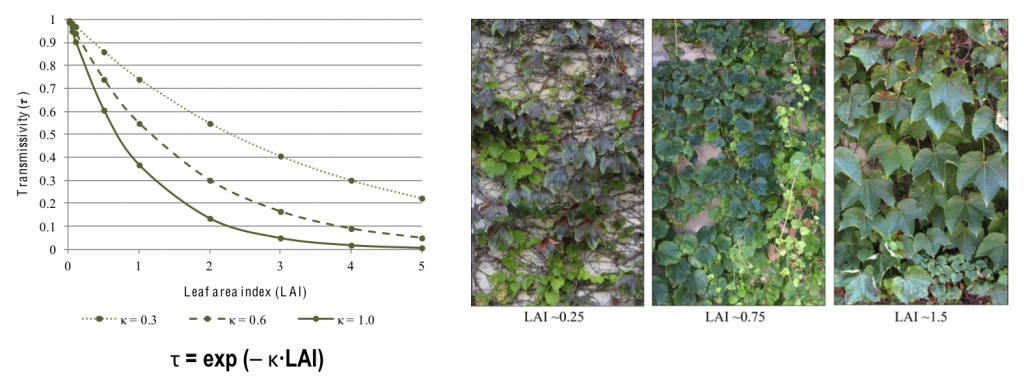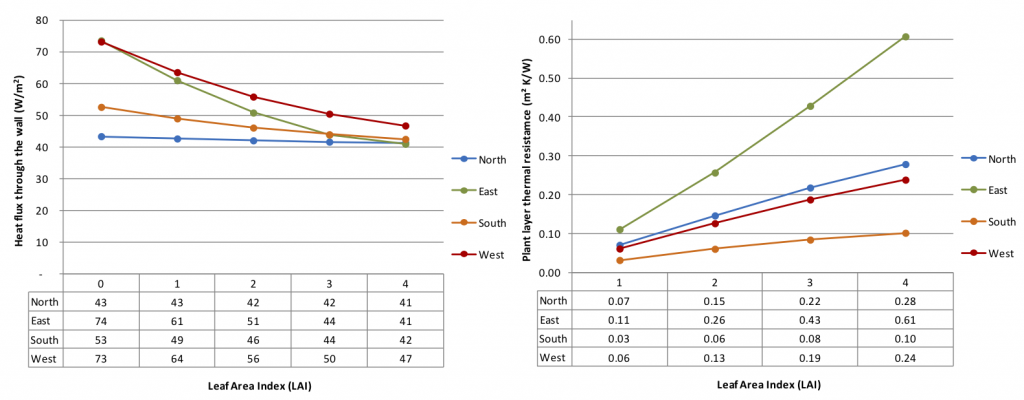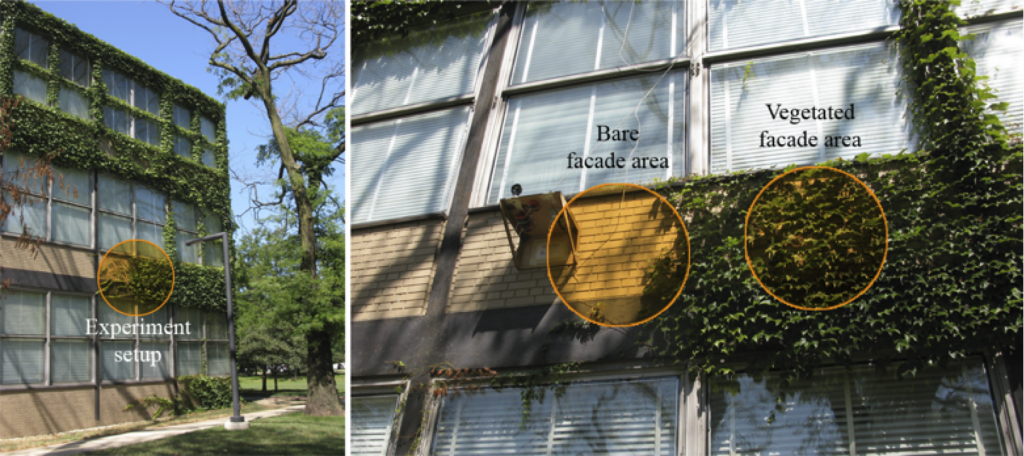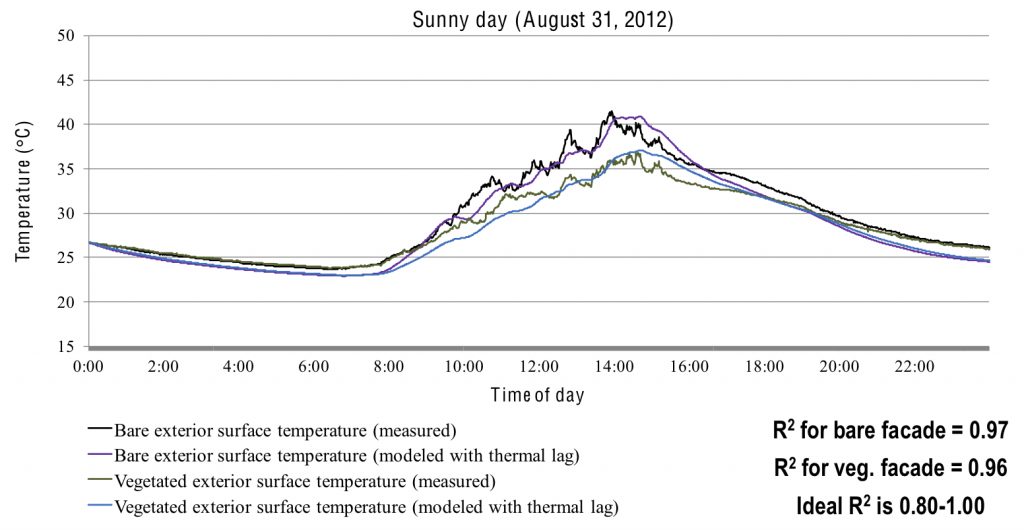Thermal performance of vegetated walls
In this work, we built a mathematical model of an exterior wall covered with climbing vegetation in order to evaluate the thermal effects of plants on heat transfer through building facades. The model allows for analysis of how various plant physiological parameters such as leaf area index (LAI), average leaf dimensions, and leaf absorptivity can improve facade thermal performance by reducing both exterior wall surface temperatures and heat flux through the façade. The model was verified with a set of experiments that measured both bare and vegetated facade thermal performance of building on IIT’s main campus during the summer. Check out some of the measured and modeled results below.
We also conducted a sensitivity analysis to elucidate the relative impacts of plant characteristics, weather conditions, climate zones, wall assembly types, and facade orientation on vegetated facade thermal performance. Overall, results showed that a plant layer added to the facade can improve its effective thermal resistance by 0.0-0.7 m^2 K/W, depending on a range of inputs for wall parameters, climate zones, and plant characteristics (particularly LAI). See below for how the effective R-value changes with LAI alone.

Transmissivity varies with leaf area index (LAI), which dictates how much solar radiation penetrates the leaf layer

Relationship between heat flux and effective R-value of the plant layer for various LAI values and wall orientations
Ultimately, this model can be used both to access facade thermal improvements in existing buildings retrofitted with green walls and to design green walls for optimal energy efficiency in new construction.
Acknowledgments
Irina Susorova was the primary author on this work. This work was funded by the Wanger Institute for Sustainable Research (WISER) Interdisciplinary Seed Funding Grant, 2011.



